Dear Rita,
Devoting one’s life to pursuit of top sport often requires a rider to travel great distances for training and competition.
When I was kid, I started transporting horses the old-fashioned way: I once drove my Arabian eight miles down a dirt road in a two-seater cart to get to a 4-H meet. I had my western and my English saddle on the bench beside me. Two riding lessons and a bologna sandwich later, I drove him the eight miles back home, and my dog followed me the whole way. Neither one of them broke down. Just sayin’.
When the distances got too great for the horses to transport themselves, I started shipping them by land and by sea.
But the most exciting travel with horses is always on an airplane!
On Oct. 10, in the wee hours of the morning, my groom, my stable manager and I loaded three of our top horses on the horse van and wound our way out of Hunterdon County, New Jersey, before the sun crested the horizon. Our final destination: La Cresta, California, for an extended training session with Jo Hinnemann. Our immediate destination was the airport at Allentown, Pennsylvania, located only one hour from our beautiful farm, Khiimori, in Califon, New Jersey. We were lucky to be able to fly from Allentown rather than a larger airport.
In a normal summer, I would’ve headed to a huge international airport like JFK to take off for Europe rather than California. This is never a fun experience. Just getting to JFK with the truck careening over pocked roads in heavy traffic and motorists cutting through lanes at every possibility to shave seconds off their travel time makes for a hair-raising trip in a passenger car, much less with a truckload of horses on board. Since the horses have to arrive six to eight hours before any international flight, they arrive mid-morning and are stabled for half a day before loading onto cargo containers in the hangar. These containers are then driven across vast stretches of tarmac to a huge cargo or combi plane and loaded onto it with lifts and conveyors.
Getting on an international flight out of a major airport is not only a long day, but it is also an overly loud process. Roaring jet engines, beeping trucks and stinky buses all wage war on the eardrums, and quite often an overwhelmingly toxic mixture of jet wash and diesel fumes are all the horses can breathe as the containers sit at the gate waiting to load. I find myself praying for no delays.
Typically, we would arrive in Europe the next day just in time for morning coffee at another major airport—possibly Brussels, Amsterdam or Frankfurt. More driving around the tarmac, another stall at the airport, some more waiting for veterinary clearance, then the long drive to a European training base begins. That drive could last anywhere from three to 12 hours, depending on the final destination.
Most trips to Europe keep the horses in transit for 24 to 30 hours door-to-door. It’s a ballbuster, Rita. They get exhausted and dehydrated; it takes days to recover from the stress. As a horseman, you find yourself scrambling to invent new ways to hydrate your horse without sticking a catheter in his vein.
The reverse trip, from Europe to the U.S., is further complicated by a stay in quarantine—anywhere from three days to six weeks depending on the gender of your horse. Suffice to say that while I have always found flying around the world with horses a really cool adventure, it can often be exhausting and require significant recovery time for all the travelers.
Not so for our trip to California! I was pleasantly surprised to fly my horses with the H.E. Tex Sutton Forwarding Company. Contrary to international experiences, our trip to California was overall an easy, pleasant and surprisingly expedient experience. Even though the actual flying time was identical—six hours to California or six hours to Europe—this trip from stable door to stable door was approximately nine hours. A veritable cakewalk for my fit and sassy horses!
The Tex Sutton company flies one custom jet, Air Horse One, all over the U.S. taking horses to races and competitions. Air Horse One is a 727, and it is especially fitted to transport horses—think of it like a horse van with wings and landing gear! Because it is handier than the jumbo jets used to transport horses internationally, it takes off and lands at smaller airports with ease.
Having awakened that morning ready to do the usual travel battle, I was relieved by the ease of access to the airport. We drove our horse van right onto the tarmac, lowered our ramp, and walked the horses up a ramp into the plane. The stalls were built around the horses as they loaded, and the whole process took approximately 15 minutes before we were ready for takeoff.
Air Horse One from Catherine Haddad on Vimeo.
The whole loading process for Air Horse One was quicker, quieter and much less stressful than what I see my horses go through on other trips. No traffic, no cacophony of harsh sounds—just the singular noise of our own jet engines warming up. (I would still recommend earplugs if you are going along for the trip because in the air the relentless drone of those engines will get to you over the long duration of the flight.) The biggest relief during the entire process was the absence of overpowering jet wash. I lie awake at night thinking about the toxic fumes my animals inhale during air transport, especially after I had one dog get very sick from prolonged exposure to jet wash at JFK. We had none of that while loading Air Horse One and for that, I am very grateful.
Flying a smaller plane has only one slight disadvantage for the larger horse. Celine, my lovely and vivacious 17.2-hand mare, had a bit of trouble with earspace.
In fact, all three of our warmbloods dwarfed the other equine passengers on the flight. We had three racing Thoroughbreds board our plane in Allentown and after a brief stop in Lexington, Kentucky, we were joined by another dozen. Fatefully, most of the Thoroughbreds on board were headed for the Santa Anita track and the Breeders Cup in California.
I feel another blog coming on but not to digress…
Rita, I am in the business of giving my horses wings over many years of training and competition. Dressage is a sport of longevity and long-term progress. Much like a gymnast trains to be become stronger, fitter and more elastic for every competition, we do the same with our horses over a period of many years.
While I depend on machines like Air Horse One to fly my horses from place to place, I try to convince my horses that they are lighter than air. I teach them to fly on their own. That’s my job and I love it.
I’m Catherine Haddad Staller, and I’m sayin it like it is from Murrieta, California.
Training Tip of the Day: Develop strength from the use of correct balance while suppling a horse behind the saddle. If you improve balance and elasticity, your horse will grow muscles on his muscles!
Catherine Haddad Staller lived in Germany for almost 20 years and accumulated more than 120 top-10 placings and wins at Grand Prix during that time. In 2006, she was the team alternate for the FEI World Equestrian Games in Aachen, Germany, and the following year, she finished seventh at the FEI World Cup Finals in Las Vegas with Maximus JSS. She was reserve for the WEG once again in 2010 and rode in the Leipzig FEI World Cup Final (Germany) in 2011. She returned to the USA in 2012 and runs training facilities in New Jersey and Florida. She’s continued to compete internationally at Grand Prix and has also coached many riders at the FEI levels. An avid breeder, Staller’s foals have taken “best in class” honors at four Hanoverian foal shows in recent years.
Photo: Courtesy Of Catherine Haddad Staller
Original article: https://www.chronofhorse.com/article/one-if-by-land-two-if-by-sea-air-horse-one










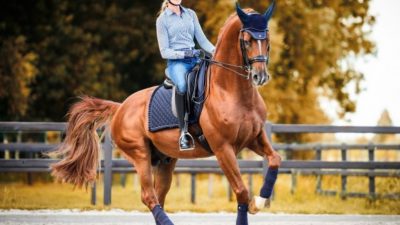
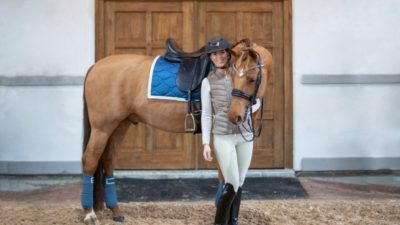
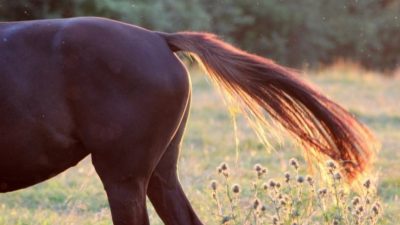


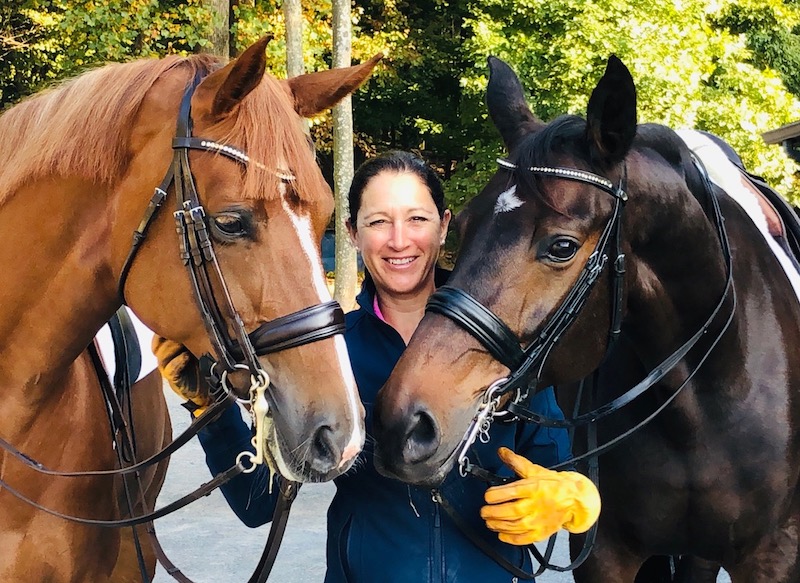






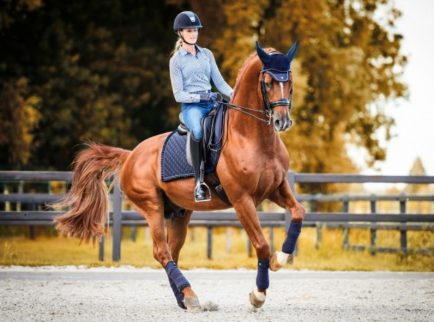
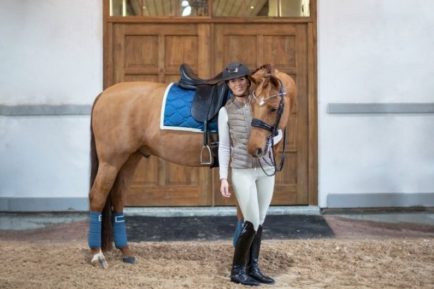
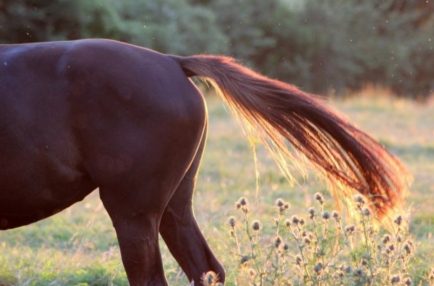
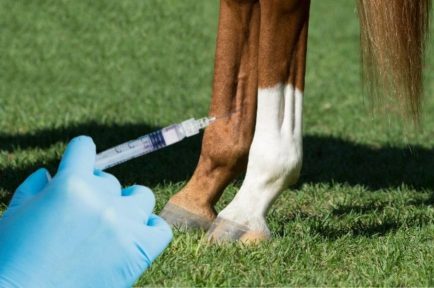
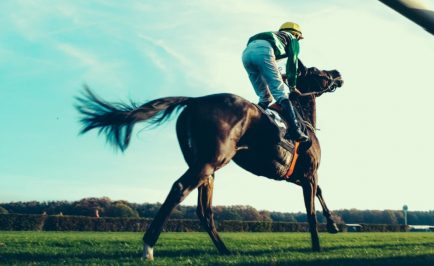
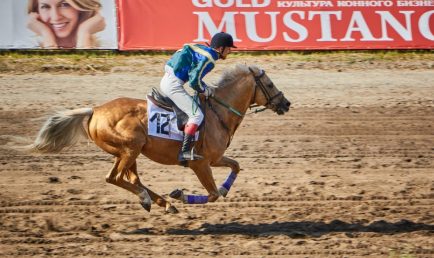
Comments